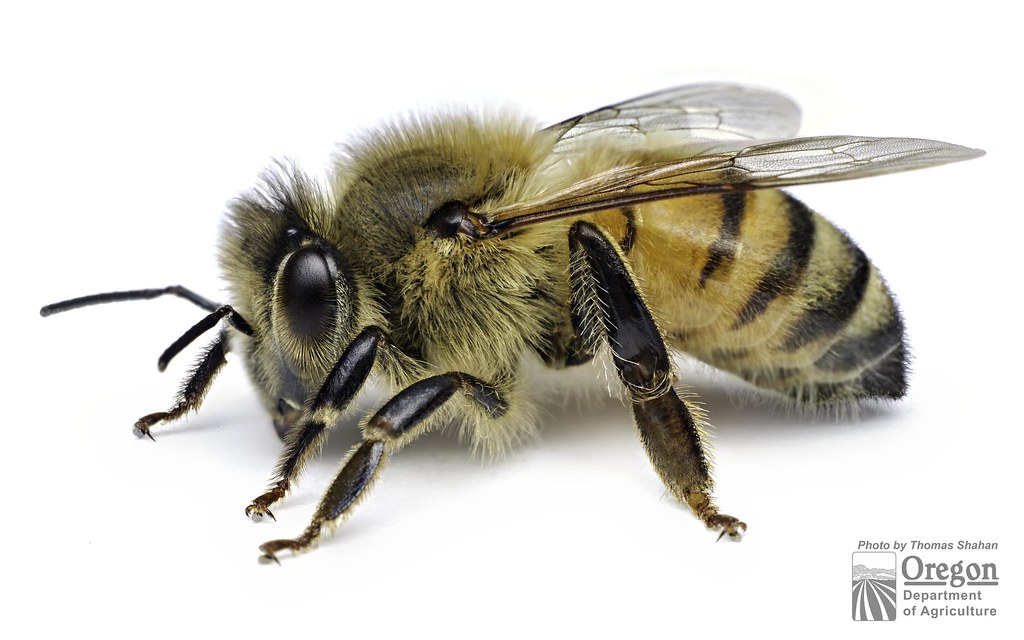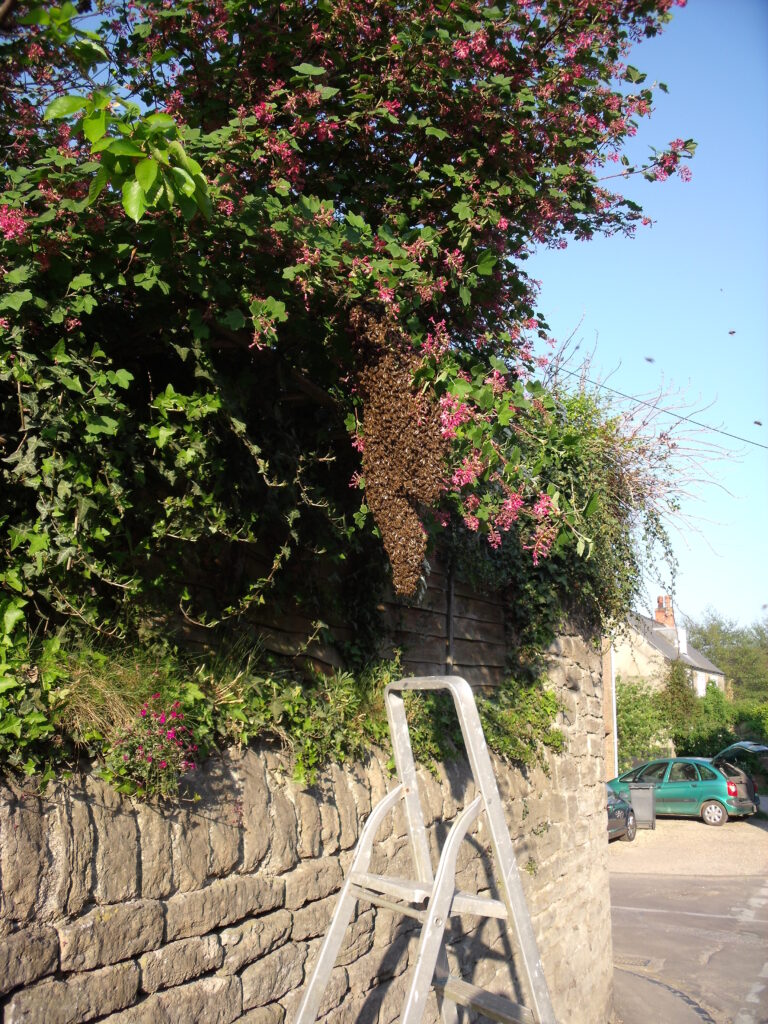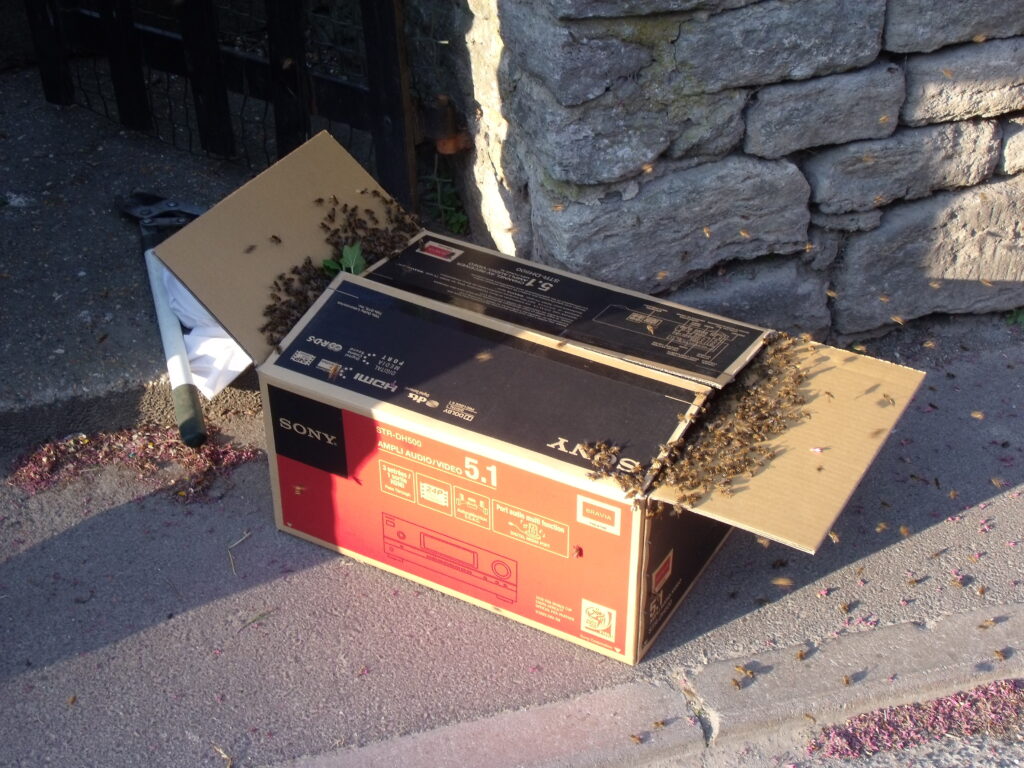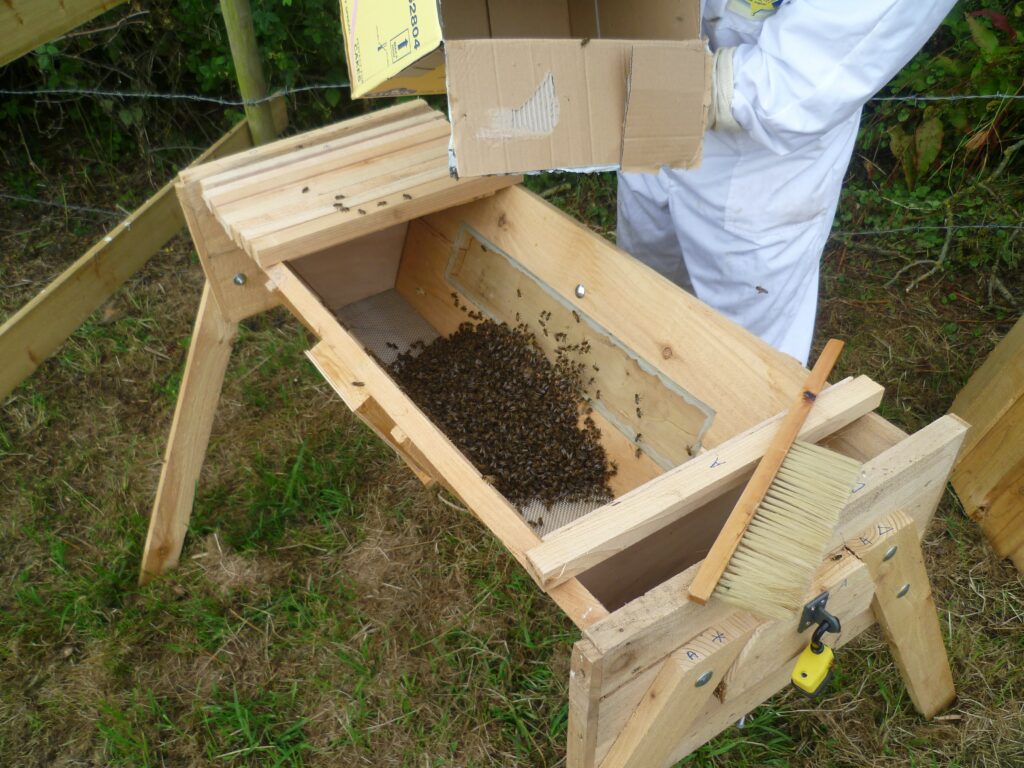The European or Western Honey Bee, Apis mellifera
The European or Western Honey Bee, Apis mellifera is a member of an order Hymenoptera (“membrane winged”) – a large order of insects, comprising the sawflies, wasps, bees, and ants. There are over 250 species of bee found in the UK 90% of which are solitary and do not live in colonies. The European Honey Bee is regarded as domesticated and is very rarely see living in the wild.
A long history of domestication and intentional transport of A. mellifera by humans has resulted in its current cosmopolitan distribution that includes all continents except Antarctica. They are best known for producing honey, but they also play a vital role in pollination. An estimated 87.5% of flowering plant species are pollinated by animals – including honey bees which are the most frequent floral visitor of crops worldwide.
Honey bees are eusocial insects which means that there are dissimilar physical types of bee in the colony performing different functions. The queen, of which there is only one in a colony, is a female bee, much larger than the worker bees which are also female but sterile and form the overwhelming majority of the colony up to 40,000 bees. Worker bees are responsible for all of the work in the colony, including collecting nectar and pollen, building the honeycomb, caring for the young, and defending the hive.
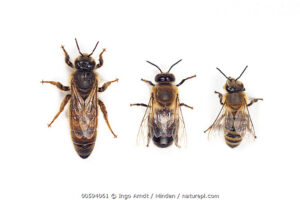
Honey Bee (Apis mellifera) queen, drone, and worker
There are a small number of male drone bees whose purpose is to mate with the queen bee and perpetuate the colony. After mating, drone bees are driven out of the hive and die.
Austrian ethologist Karl von Frisch discovered that European honeybees perform a waggle dance. This dance is how bees communicate the location, distance, and direction of food sources to other bees in the hive. His research revolutionized our understanding of animal communication, showing a level of complexity not previously thought possible in insects.
Von Frisch also conducted experiments that revealed the sophisticated sensory abilities of bees. He demonstrated their exceptional sense of smell, allowing them to distinguish flowers based on scent. Additionally, he discovered their ability to detect the polarized light patterns in the sky, which helps them navigate even when the sun is obscured.
For his ground-breaking work, von Frisch shared the 1973 Nobel Prize in Physiology or Medicine with Konrad Lorenz and Nikolaas Tinbergen. Their collective research on animal behaviour, including von Frisch’s work on bees, opened a new era in the study of animal communication and intelligence.
Albert Einstein, one of the greatest scientific minds in history, once allegedly warned that if bees were to disappear from the Earth, humanity would follow suit within four years. Although there is some doubt that Einstein actually said this there is no doubt that he had a great interest in bees and did know Karl Von Frisch.
Domesticated honey bees live in hives provided by human beekeepers. There are several types of hive. The old fashioned ‘skep’ hive is seldom used as it is very destructive to the bee colony which has to be virtually destroyed to remove the honey. Frame hives, sometimes called ‘National hives’ are the most commonly seen type of hive. They are designed to maximise honey output and are the normal type used for commercial honey production. Top bar hives actually predate the introduction of national frame hives and are considered to be less efficient in terms of honey production but to place less stress on the bees producing the honey – which leads to a more resilient and healthy colony.
The hives in Asker Meadows are of the top bar construction and the bee colonies are there to increase the propagation of local crops and wild flowers.
Bees & Pollination
No posts found.


